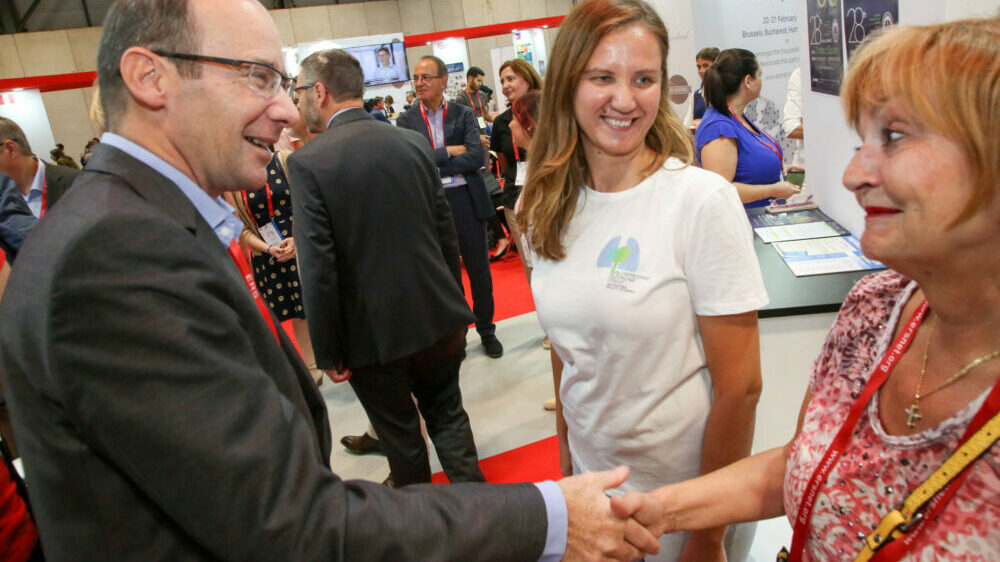
The Society
More than 35,000 clinicians, scientists and allied health professionals from over 160 countries are part of the ERS community
Become an ERS member



If you have completed your national programme or are in your final year of speciality training, you are eligible to join a highly qualified group of respiratory professionals from across Europe as a Diplomat. A Diploma is proof of excellence in the field which demonstrates commitment to life-long learning, can boost your mobility, and enables you to self-assess as a professional.
If you are currently working towards your national qualification you can use this examination to know where you stand in your current level of training, measure yourself against European standards and focus your learning as you move forward.
If you are a qualified doctor, this examination can help you to keep up to date with the latest best practices, strengthen your professional development and learn more about the field.
The examination is 3 hours long and composed of 90 multiple choice questions and delivered only in English.
The examination is divided into 2 parts: A type questions and K-prime questions.
5 answer options; 1 answer is correct.
Mark only one answer for each question:
Example of positively formulated A-type questions:
A 4-month-old boy was admitted with severe bronchiolitis. He required nasal CPAP (Continuous Positive Airflow Pressure) and 50% oxygen to maintain adequate saturations. He was discharged home after 7 days. Over the next 18 months he continued to have recurrent episodes of respiratory difficulty and wheeze whenever he had an intercurrent respiratory tract infection. These episodes were not responsive to short courses of oral corticosteroids or inhaled bronchodilators. His chest X-ray showed patchy areas and persistent hyperinflation. He was wheezy even between acute episodes.
Which of the following was the most likely cause of his persistent symptoms?
(A) Adenovirus type 7
(B) Chlamydia trachomatis
(C) Human metapneumovirus
(D) Mycoplasma pneumoniae
(E) Respiratory syncytial virus
Correct answer: A
4 answer options; 0–4 correct answers
For each answer option, the candidate must decide whether it is true or false, then mark each decision appropriately with a (+) for true or a (-) for false.
Marking all four answers correctly results in 1 point, 3 correct marks result in 0.5 points.
Example of Type K-prime question:
K1. Which of the following statements concerning benign asbestos pleural effusion is/are true?
(A) The presence of hemorrhagic fluid almost always indicates malignancy.
(B) The latency period between exposure to asbestos and onset of disease is the same for mesothelioma and benign pleural effusion.
(C) It rarely produces diffuse pleural thickening.
(D) The predominant cell on cytologic examination of pleural fluid is the lymphocyte.
Correct answer: – – + – (i.e. A, B, D false; C true)
The examinations are accredited by the European Board for Accreditation in Pneumology (EBAP).
For an additional €10, you can obtain EBAP CME credits for sitting the examination.
You will receive: